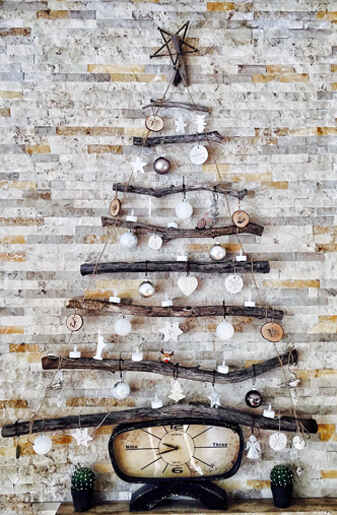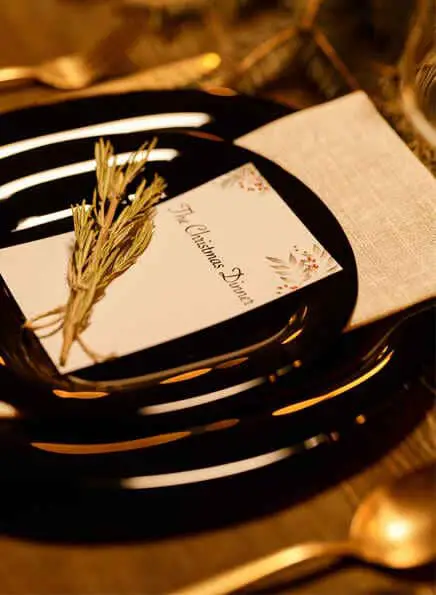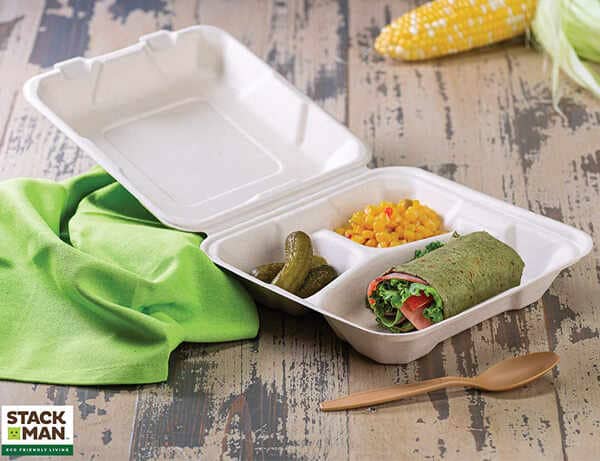10 Ways To Celebrate Eco-Friendly Christmas Days
As an Amazon Associate, Ecotero earns from qualifying purchases.
Kudos for trying to find ways to celebrate an eco-friendly Christmas!
While it is a joyous celebration, Christmas is also one of the most wasteful and environmentally taxing seasons of the year.
From plastic gift wrappers to wasted food and drinks, we can certainly do better.
So to help you get started, below are 10 simple yet effective (and inexpensive) ways to celebrate a more planet-friendly Christmas.
1. Skip the Christmas Cards
Christmas is the largest card-sending holiday in the US, with approximately 1.3 billion Christmas cards sent annually.
Imagine how many more Christmas cards are sent and exchanged worldwide.
However, the sad reality is that most Christmas cards are just going to end in the trash.
This means trees, fuel, and other resources are wasted when a more practical, cheaper, and eco-friendly alternative is available.
Just tell someone “Merry Christmas” in person.
Many Christmas cards are also wrapped in plastic sheets, which then eventually becomes unnecessary plastic trash.
But if you want to give someone a card for Christmas, opt for eco-friendly Christmas cards made from recycled paper and produced via environmentally-friendly processes.

You can also look for Christmas cards with Forest Stewardship Council (FSC) stamps as they’re produced sustainably and ethically.
2. Prepare Eco-Friendly Christmas Gifts & Stocking Stuffers
Exchanging gifts is a trademarked tradition during the Christmas season.
But did you know that you can step up your Christmas gift-giving routine this year?
If you take the time to look, you’ll find a whole new world of eco-friendly Christmas gifts and sustainable stocking stuffers that your family, friends, and co-workers will love.
You can take your pick from eco-friendly clothing brands, home accessories, personal products, and more.
By giving eco-friendly Christmas gifts, you can spoil the special people in your life while being kind to the planet.
3. Use Eco-Friendly Christmas Gift Wrappers
Avoid plastic, glossy foil, or metallic wrapping paper when wrapping Christmas gifts, as they’re difficult to recycle.
Look for a reusable gift wrapper crafted from high-quality and sustainable materials.

It’s also better if you wrap the gifts yourself so you can minimize waste and use tape sparingly.
But there is an excellent alternative to commercial gift wrap.
You can use things you already have at home, such as fabric scraps, comic strips from the old magazine, old calendars, and more.
You just have to make it presentable.
Better yet, simply hand your gift without wrapping it.
Yes, this may take away the suspense, but it’s more planet-friendly than creating unnecessary waste.
Also, it’s the actual Christmas present that counts anyways, not what it is wrapped with.
4. Opt for Eco-Friendly Christmas Trees
Did you know that in the US alone, over 30 million out of the 50 million Christmas trees purchased annually goes straight to landfills?
And take note that many Christmas trees are made of plastic, which, as you can guess, are not biodegradable.
Then there are the carbon emissions caused by transporting all these Christmas trees.
So it’s time to make some more eco-conscious changes.
Here are some ideas for a more eco-friendly Christmas tree:
- Rent a Christmas tree
- Reuse your old Christmas tree
- Borrow unused Christmas trees from family or friend
- Buy a real Christmas tree
- Buy eco-friendly Christmas trees made from recycled plastic

You can find more eco-friendly Christmas tree ideas in here.
5. Use Eco-Friendly Christmas Decorations
To help reduce plastic waste, decorate your home and Christmas tree with non-plastic ornaments and decorations.
You can use paper, yarn, twigs, and other stuff you can find at home and in your surroundings.
How about Christmas wreaths?
You can use a variety of different branches, greenery, and twigs.
You can also repurpose old paper and fabric to create a DIY eco-friendly Christmas wreath.
You can search for “eco-friendly Christmas wreaths” or “DIY Christmas wreaths” on the internet for more ideas.
Furthermore, choose LED lights for your house and Christmas tree lighting as they use up to 95% less energy than traditional Christmas light bulbs.
6. Plan your Christmas Dinner

Planning your Christmas dinner will help avoid unnecessary expenses and wasted food ingredients.
Start by knowing how many people will be present.
Then decide what food you will prepare so you’ll know which ingredients and how much of them you will need.
If you’re planning an intimate family Christmas dinner, make sure to cook only what you can eat.
And we’re not telling you to go vegan or vegetarian, but preparing more plant-based meals is also better for the planet.
But that’s totally up to you.
7. Say No to Disposable and Plastic Cutlery
Avoid serving food using plastic and disposable plates and cutlery during Christmas dinner and parties.
The same goes for plastic straws and cups, as they have nowhere else to go but in landfills.
If you ever host a big Christmas party, make sure to prepare dining utensils made of stainless steel, ceramic, or glass.
You can also consider using wood or bamboo cutlery.
If you don’t want to spend unnecessary expenses on dinnerware, you can rent plates, spoons, forks, and glasses.
You can also just borrow some from relatives and friends who have them.
8. Eco-friendly Food Containers for Christmas Dinner Leftovers
If there are leftovers after your Christmas dinner, which there will probably be, make sure to store them the eco-friendly way.
Use eco-friendly food containers made of glass, stainless steel, silicone, or plant fibers.

Plastic containers are not only bad for the planet but can also leach harmful chemicals into your food.
You can also use the same eco-friendly containers to give take-home foods to your visitors instead of wrapping food in single-use plastic wraps as most people do.
9. Reuse, Recycle, or Rot Christmas Waste
Before and after the festivities, make sure to take some time to think about how you can reduce sending waste to landfills.
For example, instead of throwing away organic kitchen waste when preparing for Christmas dinner, you can compost them using indoor compost bins.
Rotting organic waste such as food in landfills releases methane, one of the greenhouse gases responsible for global warming.
The same goes for your decorations and Christmas tree – you can recycle them into something else or compost them.
You can also keep your Christmas tree in storage to be used next year.
When washing dishes, make sure to conserve water and apply other zero waste dishwashing techniques.
10. Shop Ahead for Christmas Supplies

Shopping early for Christmas supplies will give you enough time to look for low waste or plastic-free alternatives for the items on your shopping list.
We also recommend that you shop locally for any products and ingredients available as this will help reduce carbon emissions.
And guess what?
By shopping early for Christmas, you might be able to save a few bucks as prices for food ingredients and other materials are known to go up as the Christmas season is nearing.
Final Thoughts
Christmas is one of the reasons why December is the most awaited month of the year.
But it is also the reason for tons of waste in landfills, pollution, and carbon emissions.
Fortunately, simple awareness and planning can reduce much of the negative environmental impact associated with the Christmas season.
And after reading this, we hope you’ve got some ideas on how to celebrate an eco-friendly Christmas this year and for the years to come.
Anyways, which of the eco-friendly Christmas tips above do you like best?
Do you know other simple yet effective ways to celebrate a more eco-conscious Christmas?

